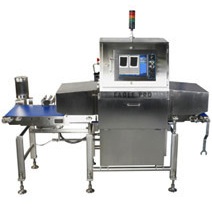 For any packaged food company, production equipment contamination can be a nightmare. Whether it’s metal shavings falling into food mixers, or pens getting dropped onto a conveyor belt carrying loose-packed ingredients, product contamination is bad news.
For any packaged food company, production equipment contamination can be a nightmare. Whether it’s metal shavings falling into food mixers, or pens getting dropped onto a conveyor belt carrying loose-packed ingredients, product contamination is bad news.
The least of your worries when production equipment contamination occurs is the cost of repairing said equipment and the lost productivity caused by an emergency shutdown. If contaminated equipment goes unnoticed, the product you ship out to consumers can get contaminated as well, creating a serious public health risk.
So, one of the best things you can do is stop production equipment contamination from happening in the first place. The question is, “how can you prevent production equipment from being contaminated?”
Here are a few key things that you can do:
1: Review Your Basic Maintenance Procedures
Even the most rugged and reliable food processing equipment needs routine maintenance to keep working at peak efficiency and safety.
However, lack of basic maintenance has, historically speaking, been an all-too-common cause of food contamination. As cited by Food Safety Magazine, “A number of foodborne outbreaks have been directly attributed to failure to properly maintain equipment under sanitary conditions.”
For example, say that an industrial mixer has a worn beater. Shavings from this beater could get mixed in with cake batter or bread dough, creating food contamination.
A quick review of your basic maintenance procedures can help prevent contamination by making sure that you’re identifying worn equipment and making the necessary repairs to keep your processing equipment in top shape.
2: Run Contamination Drills
Do your employees know what to do if a tool falls into your production equipment? What is your procedure for making sure that the contaminant is removed from your equipment without causing damage or excessive waste?
If your employees aren’t sure of how to deal with a contaminant falling into the production line effectively, then you’re leaving yourself open to problems when an incident does occur.
To remedy this issue, you should:
- Make sure that every employee is trained in your company’s procedures for dealing with contaminants in the production line as a part of the hiring process.
- Run regular drills where you purposefully “contaminate” the production line with an easy to detect component and have your team remediate the problem.
The initial training will make sure that your employees know the correct procedure, and the routine drills will help reinforce the lesson and make sure that employees retain the information.
Eventually, the procedure for removing contaminants should become second nature, improving the speed with which employees respond to an event, and the thoroughness with which they remove contaminants.
3: Use Both X-Ray and Metal Detection Equipment
In recent years, the use of specialized x-ray and metal detection equipment on food production lines has soared. However, these inspection technologies each have their respective limits.
For example, metal detection only picks up metallic objects or objects that conduct electricity. However, they can also generate false positives from the salt and moisture in wet foods, or the iron content in enriched dry foods.
X-ray inspection devices, on the other hand, might have difficulty detecting low-density contaminants such as aluminum which metal detectors could spot easily. However, x-ray machines can detect a wide variety of substances that metal detectors would completely miss (glass, stones, bones, high density plastic/rubber, etc.)
By using both types of detection equipment, you can maximize the range of contaminants you can spot in your production process, reducing the likelihood that contamination will go unnoticed.
4: Use Detectable Components
Wherever you can, be sure to replace the tools used in your production process with specialized, highly detectable components. These specialized components may be optimized for detection by x-ray, metal detectors, or both.
Built with food safety in mind, using detectable components are designed to be easy to spot so that you can remove them quickly before they can cause too much contamination.
For example, if your employees dropped a pen into the production line and it went undetected, the pen could break in your food, leaking ink into the mix and creating small, sharp shards of plastic. A detectable pen would be more likely to set off your contaminant detection equipment, preventing the ink and plastic shard contamination.
These are just a few of the ways that you can stop production equipment contamination and make your packaged food products safer for the consumer. For more product safety tips, check out the Plan Automation blog.




